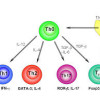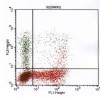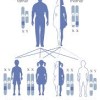Abstract
Cytokines function at the cellular, microenvironmental level, but human cytokine assessment is most commonly done at the macro level, by measuring serum cytokines. The relationships between serum and cellular cytokines, if there are any, are undefined. In a study of hospitalized patients in Malawi, we compared cytometrically assessed, cell-specific cytokine data to serum interleukin 2 (IL-2), IL-4, IL-6, IL-8, IL-10, gamma interferon (IFN-gamma), and tumor necrosis factor alpha (TNF-alpha) levels in 16 children and 71 (IL-2, -4, -6, -10) or 159 (IL-8, IFN-gamma, and TNF-alpha) adults, using Wilcoxon rank sum tests and Pearson’s (r(p)) and Spearman’s (r(s)) rank correlations.… Read more




